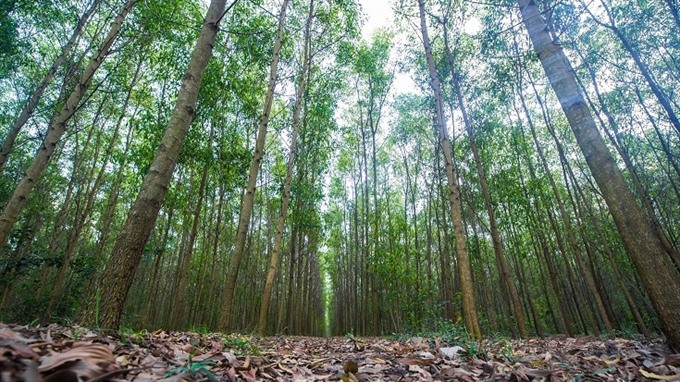 Opinion
Opinion

Việt Nam set a target to increase its forest coverage to 41.45 per cent to raise the timber export value to over US$7.5 billion by the year 2020, Hà Công Tuấn, Deputy Minister of the Ministry of Agriculture and Rural Development told the Government Portal on Monday.
 |
| Việt Nam set a target to increase its forest coverage to 41.45 per cent to raise the timber export value to over US$7.5 billion by the year 2020. — Photo worldbank.org |
HÀ NỘI — Việt Nam set a target to increase its forest coverage to 41.45 per cent to raise the timber export value to over US$7.5 billion by the year 2020, Hà Công Tuấn, Deputy Minister of the Ministry of Agriculture and Rural Development told the Government Portal on Monday.
He said to achieve this target, it is important that the country pursue sustainable forestry development in its five year plan from 2016-2020.
“Việt Nam has been and will be seriously affected by the climate change. It is high time for our people to realise the important role played by forests in our life. The forests are the earth’s lungs. They play a very important role in balancing biology while maintaining the earth’s biodiversity. In addition, the forests also help make the climate equable, protect the environment and mitigate natural calamities,” Tuấn said.
He called on people from all walks of life to participate in protecting and planting forests while using and wisely tapping the forests’ factors in order to ensure the country’s sustainable economic development, to improve the people’s livelihood and to maintain the sustainability of the homeland and the nation.
He also said that in 2016, Việt Nam faced quite a lot of difficulties due to the harsh climate with long cold spells, serious droughts and other factors, but thanks to the Vietnamese people’s hard work and the Government’s special attention, the forestry sector achieved comprehensive and significant successes.
According to a report from the General Directorate of Forestry, in 2016, encroachment acts as defined by the Law of Forest Protection and Development reduced by 9 per cent compared to 2015.
In 2016, almost 222,000 hectares of concentrated forest were planted; over 58 million scattered trees were planted and 360,000 ha of forest were re-transplanted. Also in 2016 the export value of forest products gained $7.3 billion.
However, Tuấn said, in 2016 many cases of forest fires were reported, particularly in areas adjacent to rich natural forests. The tree planting campaign to replace forest land that has been used for other purposes achieved only 55 per cent of its target.
Though some initial successes in implementing the programme to restructure the forestry sector in 2016 were achieved, the livelihood of people living on forestry activities has faced with many difficulties and challenges.
As per tradition, the first few days of the New Lunar Year inspire many tree planting festivals. This year, the campaign was launched on February 6th. In his opinion, Tuấn said the planting festival should gear toward six objectives to achieve the development goal of sustainable forestry development nation-wide. They are as follows:
First, all localities, sectors, socio and political organisations should combine efforts to promote an information, education and communication campaign on the objective and significance of Tết planting festivals. The campaign should make the people to understand the benefits of planting trees in the context of socio-economic development, environmental protection, natural calamities reduction and adaptability to climate change.
Second, all localities and units should set up their own targets on the number of trees to plant. Forestry plantation must be closely linked to the implementation of the forestry sector’s target set for the year 2017, particularly the missions of replanting forests, including the water-shed protection forests and coastal forests.
Third, the forestry sector must provide healthy young trees to ensure that they will survive after the planting. It is the duty of the forestry enterprises to take care of the trees and pay special attention to the work of fire prevention in the dry season.
Fourth, the country must apply advanced science and technology to help the forestry sector to develop sustainably and to increase the livelihood of forestry workers.
Fifth, the forest sector should work out policies to attract investors inside and outside the country to invest in forestry development projects.
And finally, the task of sustainable forestry development must go hand in hand with a comprehensive and workable legal system and in harmonisation with international laws and practice.— VNS